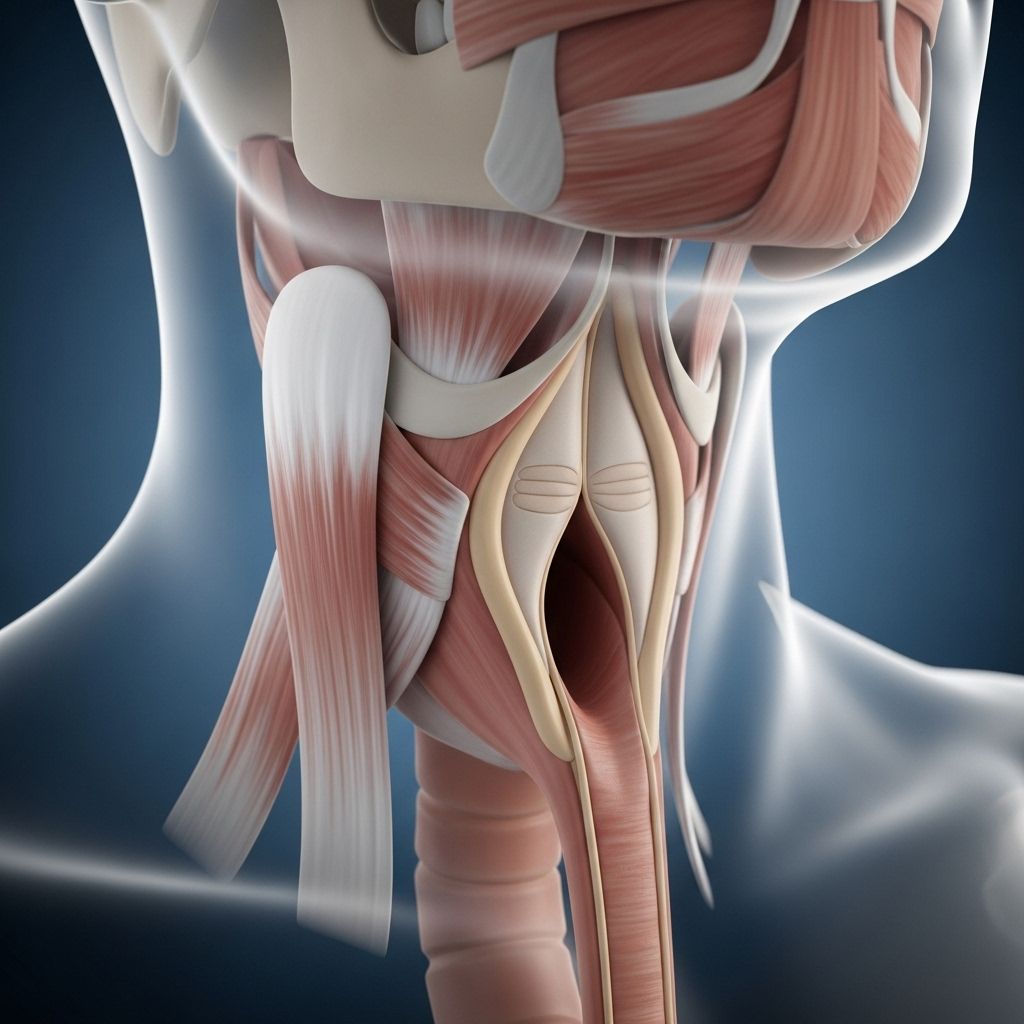Vocal Cord Disorders: Causes, Symptoms, and Treatments
Understanding Vocal Cord Disorders for Better Communication

Introduction to Vocal Cord Disorders
Vocal cord disorders affect the vocal cords’ ability to produce sound, impacting an individual’s quality of life and communication. These disorders can be classified into several types, each with distinct causes and symptoms.
## Types of Vocal Cord Disorders
1. Vocal Cord Dysfunction
Vocal cord dysfunction (VCD), also known as paradoxical vocal fold motion, involves inappropriate movement of the vocal cords, leading to inspiratory stridor and breathing difficulties. It is more common in women aged 20 to 40 and is often associated with anxiety, depression, and other psychological factors. Symptoms include inspiratory stridor, a choking sensation, and coughing. Diagnosis is typically confirmed by laryngoscopy and flow-volume loops. Treatment includes education, breathing exercises, and psychotherapy for associated psychological conditions.
2. Hoarseness
Hoarseness is characterized by a rough, harsh voice and can be caused by vocal strain, laryngitis, acid reflux, or respiratory infections. It is often accompanied by a sore throat or a sensation of a lump in the throat. Resting the voice and avoiding irritants can help alleviate symptoms.
3. Vocal Nodules and Polyps
Vocal nodules are benign growths on the vocal cords, typically resulting from vocal abuse such as excessive shouting or singing. They lead to a hoarse or breathy voice and reduced vocal range. Vocal polyps are similar but tend to be larger and more fluid-filled. Both conditions may require voice therapy or surgical intervention to correct.
4. Spasmodic Dysphonia
Spasmodic dysphonia is a neurological disorder affecting the voice, causing involuntary spasms of the vocal cords. This results in a voice that may sound strained or quivering. Treatment options include voice therapy and injections of botulinum toxin into the vocal cords.
5. Vocal Cord Paralysis
Vocal cord paralysis involves damage to the nerves controlling the vocal cords, leading to voice changes, difficulty swallowing, and breathing issues. It can be unilateral or bilateral and is often treated with speech therapy or surgery to restore vocal function.
## Causes and Risk Factors of Vocal Cord Disorders
Vocal cord disorders can arise from various factors including vocal abuse, infections, allergies, or structural abnormalities. Teachers and individuals who regularly use their voice for work are at higher risk due to frequent vocal strain.
## Diagnosis and Treatment of Vocal Cord Disorders
Diagnosis of vocal cord disorders typically involves a thorough examination by an ear, nose, and throat (ENT) specialist or a speech-language pathologist. Treatment varies depending on the disorder but often includes voice therapy, lifestyle modifications, and in some cases, surgery.
Voice Therapy
Voice therapy is a crucial component of treating many vocal cord disorders. It involves techniques to improve vocal technique, reduce strain, and enhance communication skills. A speech-language pathologist can provide personalized exercises and advice to manage symptoms effectively.
Lifestyle Modifications
Lifestyle changes such as avoiding irritants like smoke, limiting caffeine intake, and maintaining good vocal hygiene can support recovery and prevent recurrence of vocal cord disorders.
## Impact of Vocal Cord Disorders on Quality of Life
Vocal cord disorders can significantly impact an individual’s quality of life, affecting their ability to communicate effectively in both personal and professional settings. Early detection and appropriate treatment are essential to minimize the impact on daily functioning and overall well-being.
##
Frequently Asked Questions (FAQs)
Q: What are the most common symptoms of vocal cord dysfunction?
A: Common symptoms include inspiratory stridor, a choking sensation, throat tightness, and coughing.
Q: How are vocal cord disorders diagnosed?
A: Diagnosis often involves examinations by an ENT specialist or speech-language pathologist, using techniques like laryngoscopy and flow-volume loops.
Q: What role does psychotherapy play in treating vocal cord disorders?
A: Psychotherapy is especially important for disorders associated with psychological conditions, such as vocal cord dysfunction linked to anxiety or depression. It helps address underlying psychological factors contributing to the disorder.
Q: Can vocal cord disorders be prevented?
A: While some conditions are preventable, others are not. Maintaining good vocal hygiene, avoiding vocal abuse, and addressing underlying health issues can help reduce the risk of developing certain vocal cord disorders.
Q: How effective is voice therapy in treating voice disorders?
A: Voice therapy is highly effective in managing symptoms of vocal cord disorders by teaching proper vocal techniques and reducing vocal strain.
Q: What are the implications of untreated vocal cord disorders?
A: Untreated vocal cord disorders can lead to persistent voice changes, difficulty communicating, and a reduced quality of life. In severe cases, they may require surgical intervention if not managed properly.
References
- https://www.merckmanuals.com/professional/pulmonary-disorders/symptoms-of-pulmonary-disorders/vocal-cord-dysfunction
- https://www.kutestkids.com/blog/types-of-voice-disorders
- https://www.webmd.com/a-to-z-guides/remedies-vocal-cord-dysfunction
- https://www.hopkinsguides.com/hopkins/view/Johns_Hopkins_ABX_Guide/540306/6/Laryngitis
- https://pmc.ncbi.nlm.nih.gov/articles/PMC5142347/
- https://www.gbmc.org/services/mj-dance/voice
Read full bio of medha deb












